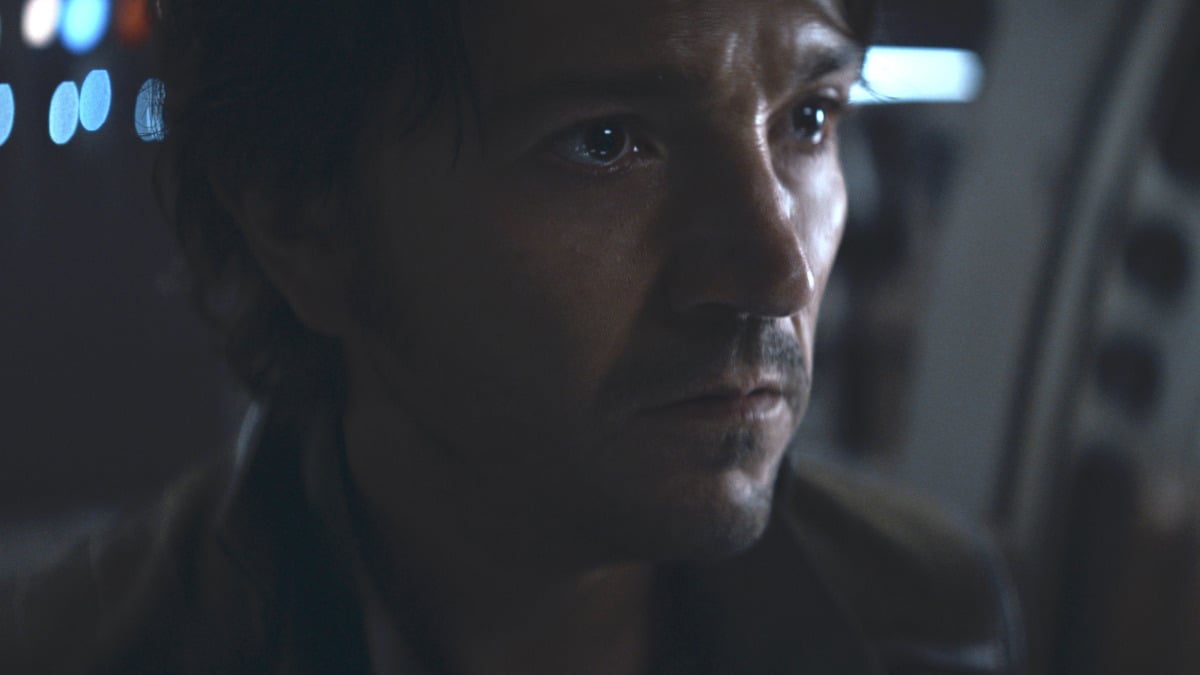Entertainment
How the ‘Andor’ finale end credits scene changes Star Wars

First of all: Yes, there is a post-credits scene in the final episode of Andor season 1, “Rix Road.” Don’t feel bad if you missed it; this is still a new thing for Star Wars fans. We’ve only seen one scene stuck in the credits before, and it’s not exactly worth remembering: the Mandalorian season 2 finale mid-credits scene that set up Book of Boba Fett.
Andor‘s sting in the tale of “Rix Road” is a different beast. It doesn’t set up anything, exactly. And it doesn’t necessarily come as a surprise to hardcore fans, who had been expecting a reveal along these lines. But it does carry a surprising amount of nuance for its handful of seconds, changing and deepening the meaning of the movie that Andor precedes, Rogue One.
There are deep layers of irony at work in Andor‘s first season, we now know — both for the title character and for the Empire that tried to break him.
What did we see? Spider-like construction droids at work in the blackness of space. They’re using the mystery mechanisms that Cassian Andor and his fellow prisoners on Narkina 5 worked themselves to the bone — and sometimes to the death — constructing. These six-spoke structures, flipped upside down, tie together a large curved field of golden hexagons.
We zoom out to find the curved field is part of a familiar structure: the Death Star! But not just any part of the infamous technological terror: it’s the radar dish-like housing for the Death Star’s main active component, its so-called Superlaser.
If you’ve seen a little indie flick from 1977 formerly known as Star Wars, you know that this Superlaser destroys Princess Leia’s home planet, Alderaan. It also menaces the Rebel base on the moon of Yavin 4, which it is about to annihilate when Luke Skywalker exploits a weakness in the Death Star plans, via a couple of Force-guided proton torpedos to the reactor shaft.
And if you’ve seen Rogue One, which takes place immediately prior to the original movie, you know two things about this Superlaser section of the almost-complete Death Star. You know it is behind schedule: Grand Moff Tarkin watches it, the final segment of the planet-killing project, slotting into place while berating Director Orson Krennic about “so many setbacks and delays.”
You also know that the Superlaser will be tested twice: First on the planet Jedha, where it kills Saw Gererra and his forces; secondly on Scarif, where Cassian Andor and Jyn Erso have just ensured transmission of the vital Death Star plans to Leia’s ship. Andor and Erso die in each other’s arms on the beach as the explosion engulfs them.
So: Cassian’s prison labor helped construct the very weapon that killed him five years later. That’s pretty ironic! But you can look at it this way, too: The prison break that Cassian initiated is bound to be one of those “setbacks and delays” to Krennic’s plan.
Star Wars would have been a much shorter saga without Andor
In that case we must ask: Would the history of the Star Wars galaxy have been very different if the Narkina 5 prisoners had kept working? And we must conclude that it would. Jedha, Scarif, Alderaan, Yavin 4: all these attacks could still have happened, they just would have happened slightly earlier.
In the case of Scarif, the Death Star might have arrived minutes earlier — just in time to prevent transmission of the plans that showed Galen Erso’s deliberate flaw in the reactor shaft. The events of A New Hope simply wouldn’t happen; Tarkin would be free to keep the galaxy in line with pure fear, destroying rebellious planets at will.
Similarly, the attack on Yavin 4 needed mere seconds more to succeed. If the Superlaser struck the Rebel base, it’s game over for the fledgling rebellion. Mon Mothma, Princess Leia and every other rebel leader would be vaporized. At that point, it wouldn’t matter if Luke’s torpedos reached their target; all that would be left of the rebellion would be him, Biggs, Han and Chewie. They’d be easy pickings for Darth Vader’s mind games and the Emperor’s vast and largely undisturbed forces.
What we have here, in short, is the space fantasy version of a proverb so ancient we don’t know its true origin: For want of a nail, the battle was lost. The mechanical placeholders are those nails. The Death Star is the horse that threw its rider. A few more Narkina 5 shifts, had the prisoners not realized their situation, would have meant earlier delivery of a few more nails.
By being captured, Cassian unwittingly constructed the means of his own death. But by refusing to submit, he saved the galaxy twice: once by delaying the Death Star’s construction, once by sharing its existence.
Does the post-credits sequence mean that the Death Star will be more of a presence in Andor season 2? Not necessarily. Cassian himself doesn’t even know about any “planet killer” until the start of the movie. Nor does Mon Mothma, not until the pilot Bodhi Rook defects to Saw Gerrera.
Perhaps Luthen Gael, Cassian’s mentor, will discover the Death Star’s existence — but if so, he doesn’t live long enough to tell anyone. No, the only full picture of what’s happening in the galaxy belongs to us, the viewers. And that, of all Andor‘s great storytelling decisions, may be the single most satisfying.
-

 Business7 days ago
Business7 days agoLondon’s first defense tech hackathon brings Ukraine war closer to the city’s startups
-

 Business7 days ago
Business7 days agoHumanoid robots are learning to fall well
-

 Entertainment6 days ago
Entertainment6 days ago2024 summer TV preview: 33 TV shows to watch this summer
-

 Business5 days ago
Business5 days agoGoogle Gemini: Everything you need to know about the new generative AI platform
-

 Business3 days ago
Business3 days agoHaun Ventures is riding the bitcoin high
-

 Entertainment5 days ago
Entertainment5 days ago‘Bridgerton’: Everything you need to remember before Season 3
-

 Entertainment3 days ago
Entertainment3 days agoHands-on with the Claude AI app: It’s pleasant to use, but janky
-

 Entertainment3 days ago
Entertainment3 days ago5 essential gadgets for turning your home into a self-care sanctuary




























